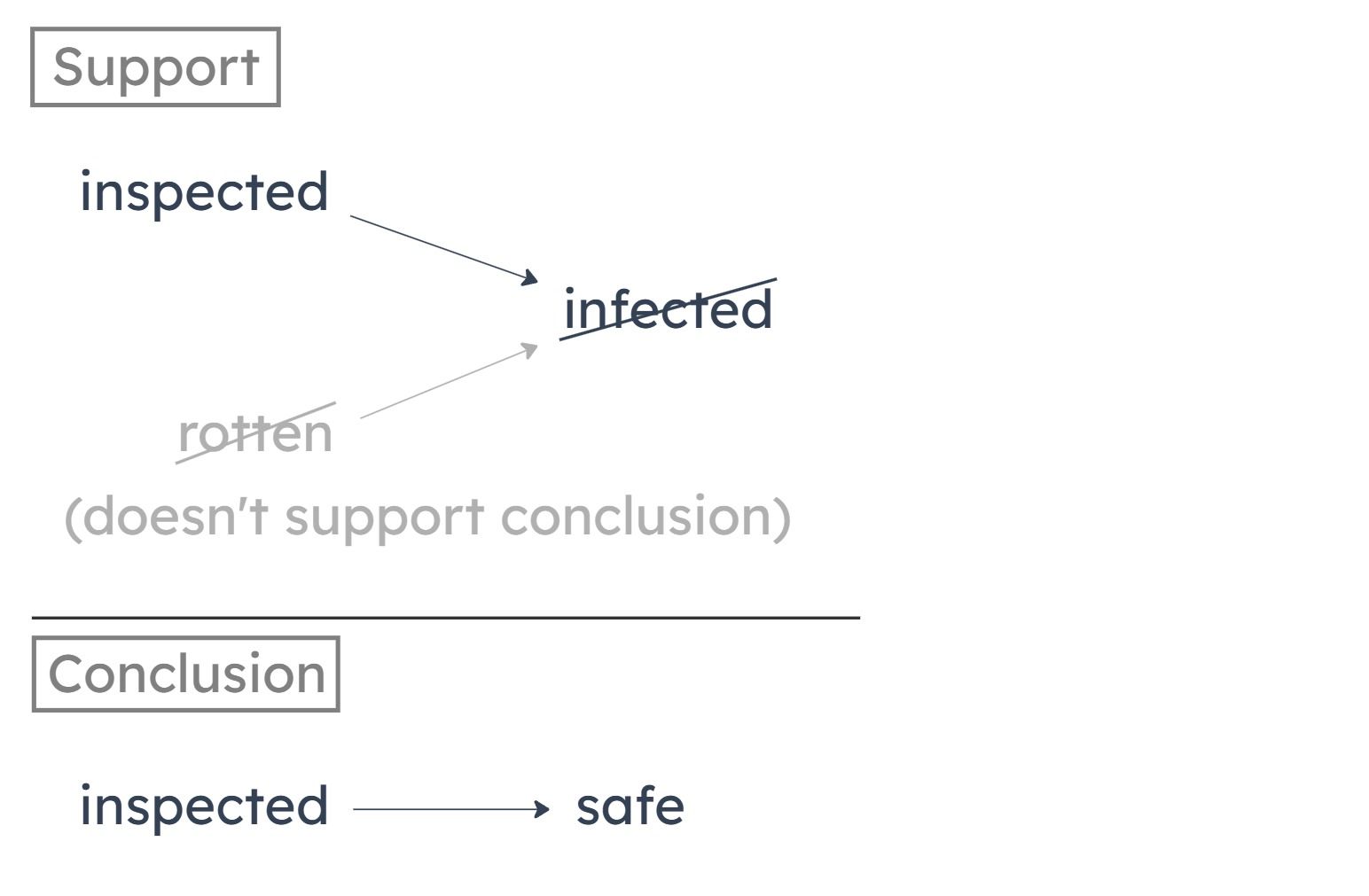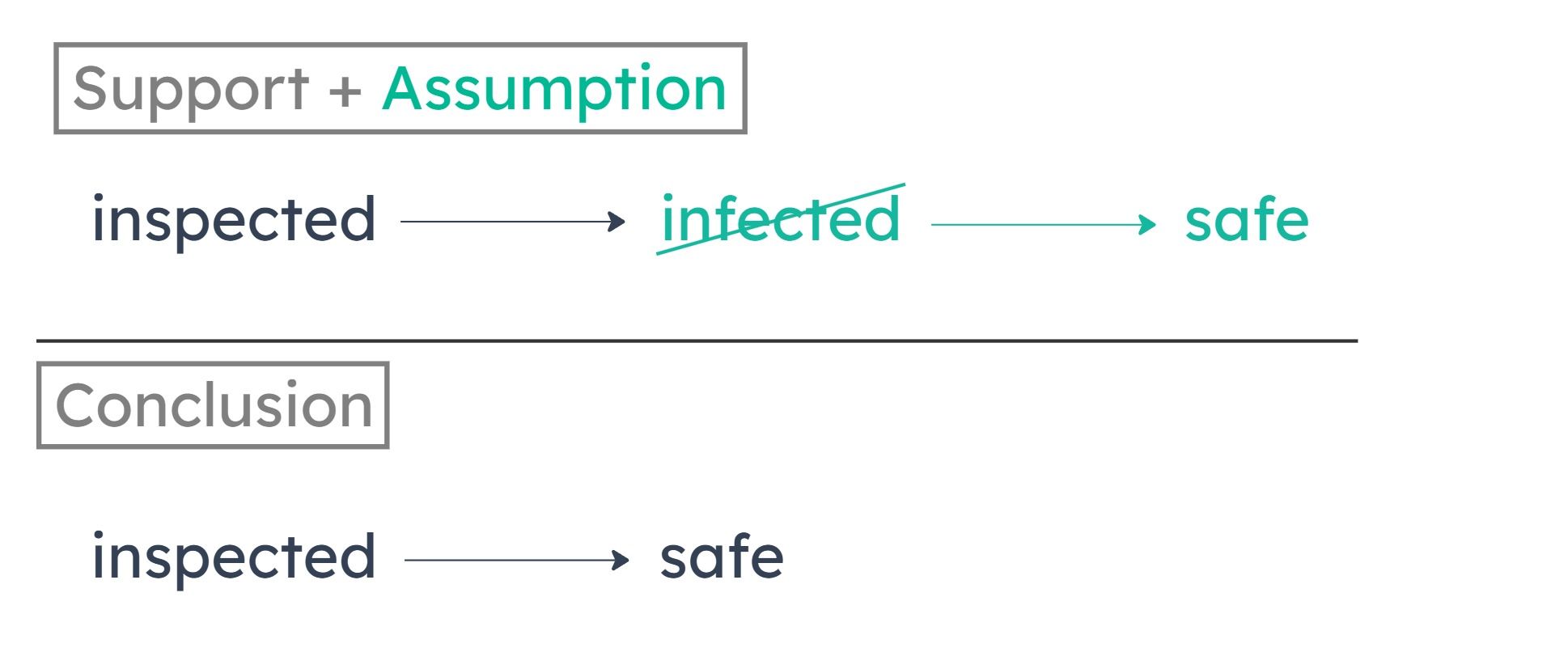Sign up to star your favorites LSAT 122 - Section 2 - Question 01
April 21, 2012Gustav: Carver was one of the finest writers of the past 30 years. Granted, his stories are characterized by somberness and pessimism, but they are also wryly humorous, compassionate, and beautifully structured.
A
Carver’s stories are truly compassionate
B
Carver’s stories are pessimistic in their vision
C
stories that are characterized by somberness and pessimism can appropriately be called humorous
D
stories that are well written can be somber and pessimistic
E
there are some characteristics of a story that are decisive in determining its aesthetic value
</section
Sign up to star your favorites LSAT 122 - Section 2 - Question 02
April 21, 2012
A
Longer prison sentences were the primary cause of the decrease in the violent crime rate over the course of last year.
B
As in the past, last year’s increase in public anxiety about violent crime has been consistently underreported in the news media.
C
Most people can realistically assess the likelihood that they will become victims of violent crime.
D
People who feel the most anxiety about violent crime usually live in areas with relatively high violent crime rates.
E
The proportion of violent crimes covered in the news media nearly doubled over the course of last year.
Sign up to star your favorites LSAT 122 - Section 2 - Question 03
April 21, 2012Sign up to star your favorites LSAT 122 - Section 2 - Question 04
April 21, 2012Cookie Cutter Review
Causation
(A) related effect
(C) control group
(D) consistent data
(E) related cause
A
Young children tend to be more accepting of aggressive behavior in others immediately after playing video games with violent content.
B
Many young children who have never played video games with violent content believe that aggressive behavior is acceptable.
C
Other studies have shown no increase in aggressive behavior in young children who have just played nonviolent video games.
D
Older children are less likely before playing video games with violent content than they are afterwards to believe that aggressive behavior is acceptable.
E
Young children tend to behave more aggressively immediately after being told that aggressive behavior is acceptable than they did beforehand.
Sign up to star your favorites LSAT 122 - Section 2 - Question 05
April 21, 2012
A
criticizes a characteristic of the people giving an argument rather than criticizing the argument itself
B
takes failure to act consistently with a belief as an indication of the sincerity with which that belief is held
C
presumes that a viewpoint must be unreasonable to accept simply because some of the grounds advanced to support it do not adequately do so
D
fails to recognize that evidence advanced in support of a conclusion actually undermines that conclusion
E
generalizes about the behavior of all people on the basis of the behavior of a few
Cookie Cutter Review
Flaw - source or character attack (A)
(B) conflation of distinct ideas
(C) failure to prove X confused with proof of not X
(D) evidence against X confused with evidence for X
(E) too small sample size / over-generalization
Sign up to star your favorites LSAT 122 - Section 2 - Question 06
April 21, 2012
A
Birds other than cattle egrets have been observed consuming insects stirred up by the movement of cattle.
B
Cattle egrets are known to follow other slow-moving animals, such as rhinoceroses and buffalo.
C
The presence of cattle dissuades many would-be predators of the cattle egret.
D
Cattle egrets are not generally known to live outside the range of large, slow-moving animals.
E
Forests are generally inhospitable to cattle egrets because of a lack of insects of the kind egrets can consume.
Sign up to star your favorites LSAT 122 - Section 2 - Question 07
April 21, 2012This is supported by the claim that any fruit that was inspected is not infected. (This is a translation of “No fruit that was inspected is infected.”)
The claim “any fruit that is infected is also rotten” plays no role in supporting the conclusion, because it doesn’t connect to the concept of “inspected” or “safe to eat.”

We want to establish that if a fruit is not infected, then it’s safe to eat.
A
It is not safe to eat any fruit that is rotten.
B
It is safe to eat any fruit that is not rotten.
C
It would have been safe to eat infected fruit if it had been inspected.
D
It is not safe to eat any fruit that is infected.
E
It is safe to eat any fruit that is uninfected.

Cookie Cutter Review
SA question, heavy use of lawgic, formulaic
Sign up to star your favorites LSAT 122 - Section 2 - Question 08
April 21, 2012
A
A pay phone typically cost less than a soft-drink machine in the 1970s.
B
Due to inflation, the prices of most goods more than doubled between the 1970s and 1990.
C
Government regulation of phone call prices did not become more stringent between the 1970s and 1990.
D
Between the 1970s and 1990 the cost of ingredients for soft drinks increased at a greater rate than the cost of telephone equipment.
E
Technological advances made telephone equipment more sophisticated between the 1970s and 1990.
Sign up to star your favorites LSAT 122 - Section 2 - Question 09
April 21, 2012Members of large-animal species must consume enormous amounts of food to survive. When climatic conditions in their environment deteriorate, such animals are often unable to find enough food. This fact helps make large-animal species more vulnerable to extinction than small-animal species, which can maintain greater populations on smaller amounts of food.
Summary
Large-animal species must consume enormous amounts of food. If climatic conditions deteriorate in their environment, these animals often cannot find enough food. This means that large-animal species are more vulnerable to extinction than small-animal species.
Strongly Supported Conclusions
A lack of food is one of the risk factors involved in mass extinctions. Climate changes can risk mass extinctions by undermining the food supply of large-animal species.
A
The maximum population size that an animal species could maintain on any given amount of food is the main factor determining whether that species will become extinct.
This is unsupported because we don’t know anything about the maximum population sizes that species maintain and how that relates to survival.
B
The vulnerability of an animal species to extinction depends at least in part on how much food individuals of that species must consume to survive.
This is strongly supported because different species, varying based on how much food they need, would have different risks of mass extinction. Large species who need more food are at a greater risk than small species needing less.
C
When conditions deteriorate in a given environment, no small-animal species will become extinct unless some large-animal species also becomes extinct.
This is unsupported because small-animal species may go extinct when conditions deteriorate due to reasons unrelated to food supply. The author only states that large-animal species are more from climate shocks to food.
D
Within any given species, the prospects for survival of any particular individual depend primarily on the amount of food that individual requires.
This is unsupported because while food is identified as one of the factors influencing prospects for survival, we don’t know that it is the primary factor. We also don’t know that it is the primary factor for any individual - our author limits analysis to whole species.
E
Whenever climatic conditions in a given environment are bad enough to threaten large-animal species with extinction, small-animal species are able to find enough food to survive.
This is unsupported because it is possible that climatic conditions are so bad as to affect small and large-species animals. We only know that large-species animals typically fare worse in climate changes.
Sign up to star your favorites LSAT 122 - Section 2 - Question 10
April 21, 2012Channen: Not everybody thinks that way. After all, money is the universal medium of exchange. So, if you have enough of it, you can exchange it for whatever other material goods you may need or want even if you are indifferent to what others think of you.